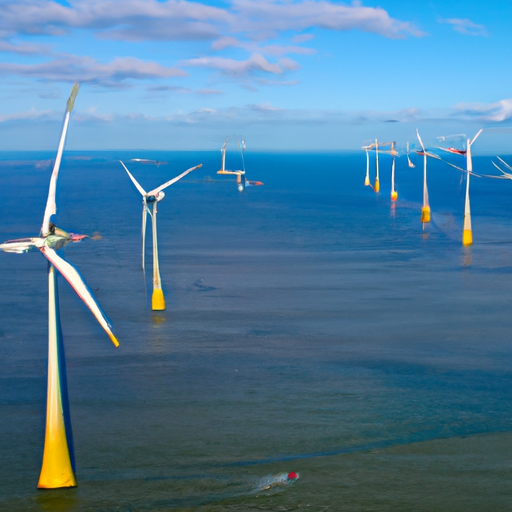The US Bureau of Ocean Energy Management (BOEM) made history by granting five offshore wind energy leases on the nation’s west coast. The landmark move, which took place last year, represents the first step towards significant, commercial-scale floating offshore wind energy development in the country. Equinor secured one such lease in the Morro Bay area of the Pacific Ocean. The Norwegian energy company pledged $130 million for around 80,062 acres, capable of generating around 2GW of power. This production capacity reflects the potential for wind energy to light up around 750,000 American homes.
Tapping into America’s Vast Offshore Wind Energy Potential
Two-thirds of the United States’ offshore wind energy potential lies in deep waters. The Pacific seaboard—with its immediate drop to 1000+ meter depths past the narrow continental shelf—proffers new opportunities for renewable energy generation. Specifically, floating offshore wind technology could be a game-changer. Norwegian multinational Equinor, a major player in this arena, looks forward to harnessing its expertise in bringing California’s sustainable offshore wind industry to life.
Targeting a Future Powered by Offshore Wind Energy
The US federal administration under President Biden harbors ambitious plans for offshore wind energy. They aim to scale up capacity to 30 GW by 2030, with an emphasis on floating offshore wind capacity of 15 GW by 2035. These targets exceed the current global floating offshore wind installations by over 100 times. Various state policies and initiatives back this vision, with California setting its eyes on a 5 GW capacity by 2030, ultimately surging to a 25 GW capacity of floating offshore wind energy by 2045.
The Journey from Contract to Functioning Wind Farm
Taking a project from contract to operational wind farm poses unique challenges. While surveyors have the luxury of carefully examining a land site or flying over it for data, offshore wind farms—particularly deep-sea ones—present different hurdles. Ocean Infinity, a pioneering marine robotics company, recently secured a notable contract from Equinor Wind US LLC to establish one of the first floating offshore wind farms on the US West Coast.
Equinor-Ocean Infinity Collaboration for Wind Farm Project
Ocean Infinity will conduct a thorough site investigation survey under the new contract. Utilizing multiple Autonomous Underwater Vehicles (AUVs), the firm will investigate Equinor’s pioneering floating offshore wind lease area (OCS-P 0563). Shawntel Johnson, Director, of Business Development at Ocean Infinity, acknowledged its multi-AUV capabilities’ suitability for a region with such deep water topography.
The Role of Technology in Offshore Wind Farm Construction
Traditionally, constructors used bottom-fixed offshore wind turbines with seabed foundations for building wind farms in shallow waters. However, deep waters demand innovative solutions—for example, floating wind turbines. The platforms for these turbines, designed to withstand open sea harshness, can be built on land and efficiently deployed in deep waters. Equinor, with a wealth of experience in wind farm construction, uses spar platforms for floating turbines. Equinor employs seabed-anchored cables or chains to prevent the drifting of these platforms. For determining the anchoring points, a survey is required, facilitated by the collaboration with Ocean Infinity.
Increasing exploitation of reliable offshore winds delivers more power and better access for coastal cities than inland sources. As we move towards a sustainable energy future, such innovative offshore wind power projects will play a crucial role.
